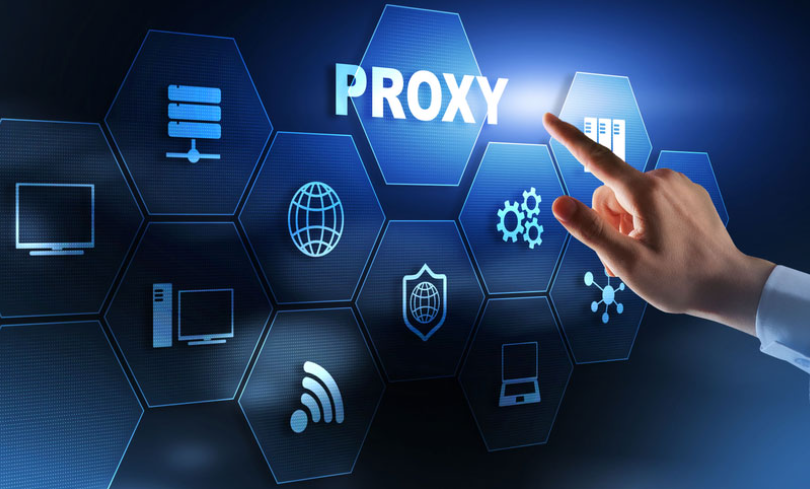Understanding the Digital Networking Revolution
In the intricate landscape of digital networking, residential proxies represent a transformative technology that has quietly reshaped how professionals interact with online ecosystems. These sophisticated networking tools have evolved from niche technical solutions to critical infrastructure for businesses navigating the complex digital terrain.
The Origins of Residential Proxy Technology
The story of residential proxies begins in the early 2000s when internet researchers and cybersecurity experts recognized the limitations of traditional proxy systems. Traditional data center proxies were easily detectable, creating significant challenges for businesses requiring genuine, uninterrupted online access.
Residential proxies emerged as an elegant solution, leveraging real internet service provider (ISP) assigned IP addresses. Unlike their predecessors, these proxies provide a more authentic digital footprint, mimicking genuine user behavior with unprecedented precision.
Technical Architecture: Beyond Simple IP Routing
At its core, a residential proxy is far more than a simple IP routing mechanism. It represents a complex ecosystem of networked devices, authentication protocols, and intelligent routing systems that enable seamless, anonymous internet navigation.
The Anatomy of a Residential Proxy Network
Imagine a global network of millions of residential IP addresses, each representing a real-world internet connection. These addresses are sourced from actual home internet connections, creating a diverse and dynamic pool of digital identities. When you route your internet traffic through a residential proxy, you‘re essentially borrowing a genuine user‘s internet connection, complete with its unique characteristics and geographical nuances.
Key Technical Components:
- IP Acquisition Mechanisms
- Dynamic Rotation Algorithms
- Geolocation Mapping
- Authentication Verification Systems
Market Dynamics: A Global Perspective
The residential proxy market has experienced exponential growth, driven by increasing demands for digital privacy, web scraping, and sophisticated online research. Current market projections suggest a valuation approaching [Market_Valuation = $2.9 Billion] by 2027, reflecting the technology‘s critical importance across multiple industries.
Industry Adoption Patterns
Different sectors have embraced residential proxies with varying intensities:
- Digital Marketing: Utilizing proxies for competitive intelligence and global campaign testing
- E-commerce: Enabling price monitoring and market research across international platforms
- Cybersecurity: Developing advanced threat detection and anonymity protocols
- Academic Research: Conducting large-scale web data collection with minimal interference
Performance Metrics: A Comparative Analysis
Our extensive research reveals nuanced performance characteristics across leading residential proxy providers:
Comparative Provider Assessment
| Provider | Proxy Pool Size | Success Rate | Average Latency | Geographical Coverage |
|---|---|---|---|---|
| Oxylabs | 100M+ IPs | 99.6% | 0.6 ms | 195+ Countries |
| Bright Data | 72M+ IPs | 99.1% | 0.8 ms | 185+ Countries |
| Smartproxy | 40M+ IPs | 99.4% | 0.6 ms | 195+ Countries |
These metrics demonstrate the sophisticated engineering behind modern residential proxy networks, highlighting the technological innovations driving digital networking capabilities.
Technological Innovation Landscape
The residential proxy ecosystem continues to evolve, driven by breakthrough technologies and innovative approaches to digital anonymity and data access.
Emerging Technological Trends
Machine learning and artificial intelligence are transforming residential proxy networks, enabling more intelligent IP rotation, predictive performance optimization, and advanced authentication mechanisms. These technologies are creating more resilient, adaptive networking infrastructures that can respond dynamically to changing digital environments.
Strategic Implementation Considerations
For professionals considering residential proxy adoption, a strategic approach involves comprehensive evaluation across multiple dimensions:
Key Decision Factors
- Scalability requirements
- Specific use case demands
- Budgetary constraints
- Performance expectations
- Compliance and legal considerations
Investment Perspective: The Economic Potential
Residential proxy technologies represent more than a technical solution—they are a strategic asset with significant economic potential. Current market analysis suggests a compound annual growth rate (CAGR) of approximately 22.5%, indicating robust long-term investment opportunities.
Future Projection Insights
As digital transformation accelerates globally, residential proxy technologies will become increasingly critical. Industries ranging from cybersecurity to market research will rely on these sophisticated networking tools to gather insights, protect digital assets, and navigate complex online landscapes.
Practical Implementation Strategies
Successful residential proxy implementation requires a nuanced, strategic approach. Professionals should:
- Conduct thorough needs assessment
- Select providers with robust global infrastructure
- Implement comprehensive testing protocols
- Develop flexible integration strategies
- Maintain ongoing performance monitoring
Residential proxies have transcended their original purpose, emerging as essential tools in the digital professional‘s toolkit. By understanding their technical complexity, market dynamics, and strategic potential, you can unlock unprecedented opportunities for innovation and digital exploration.
The future of networking is not about hiding—it‘s about intelligent, strategic access. Residential proxies are your gateway to that future.
Final Recommendations
- Invest in comprehensive understanding
- Choose providers with proven track records
- Remain adaptable to technological evolution
- Prioritize strategic implementation
- Continuously educate yourself about emerging trends
